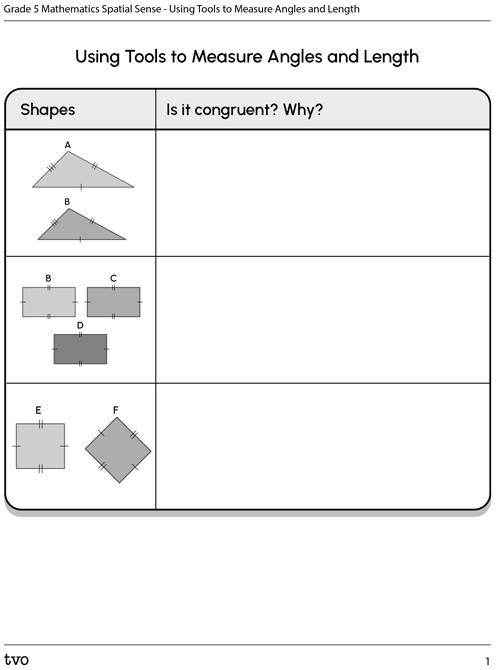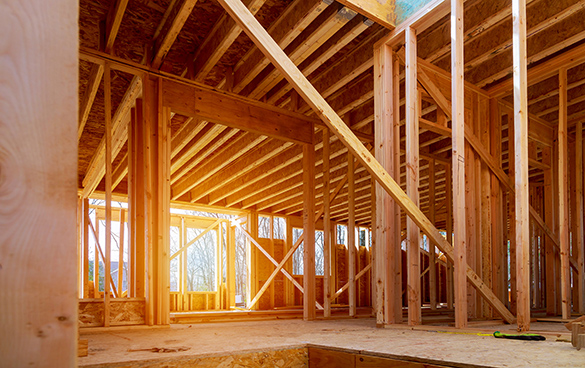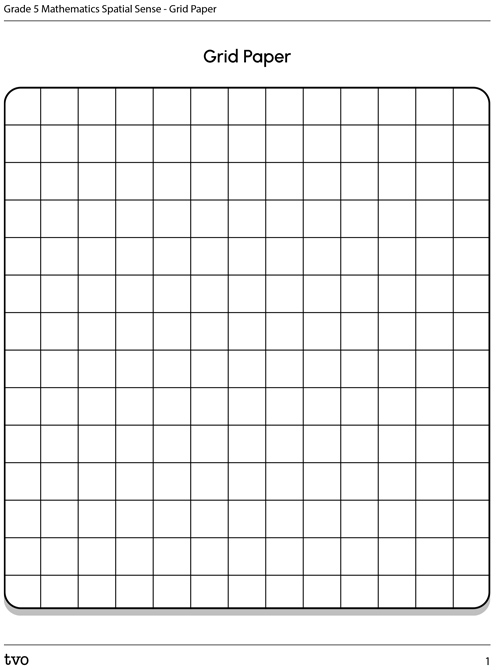Minds On
Geometric art
Explore the two-dimensional shapes artwork. Can you identify any shapes that are similar? Can you identify any shapes that are congruent?
Record your ideas in a notebook or a method of your choice.

Action
Congruent vs. similar

Geometric artwork with six congruent shapes that are labeled in letter pairs. Shapes A and B are squares with the same side lengths, and four angles of 90 degrees. Shapes C and D are rectangles with the same side lengths, and four angles of 90 degrees. Shapes E and F are rectangles with the same side lengths, and four angles of 90 degrees.
In the geometric artwork you explored in the Minds On, you may have noticed that there are many similar rectangles and squares. However, there are only a few sets of congruent shapes.
A shape is congruent if their side lengths and angles are identical.
In the geometric artwork, A and B are congruent squares, C and D are congruent rectangles, and E and F are congruent rectangles.
Each of the identified pairs contain four angles of 90°, and identical side lengths.
Congruent or similar triangles
Examine the sets of triangles. Which set of triangles are congruent? How do you know?
Set 1 of triangles
Press the ‘Answer’ button to access the explanation to why the triangles are congruent or not.
Each triangle is an equilateral triangle and shares the same angles.
I can use the grid to measure the base and side lengths of both triangles and know that they are identical. If I tried to transpose or place one triangle a top of the other, they would match.
However, in this case, the length of the sides of the triangles are different.
These triangles are similar, but they are not congruent.Set 2 of triangles
Press the ‘Answer’ button to access the explanation to why the triangles are congruent or not.
I know that both triangles are right angle triangles because of the right-angle square.
I can use the grid to measure the base and side lengths of both triangles and know that they are identical. If I tried to transpose or place one triangle a top of the other, they would match.
These triangles are congruent.
Congruent or similar rhombuses
A rhombus is a type of parallelogram. It has 2 sets of parallel sides and all side lengths are equal. A rhombus has two sets of congruent angles.
Press the ‘Answer’ button to access the explanation to why the triangles are congruent or not.

If we compare the sides of the rhombus, we find that they share equal side lengths of two units. While the second rhombus has been rotated, once we check the angles, we find that both rhombuses share the same set of congruent angles.
- two angles of 60°
- two angles of 120°
While the position of the two rhombuses are different, they still share the same side lengths and sets of congruent angles. So, this pair of shapes is congruent.
Using tools to measure angles and length

In order to check if the angles and length of sides of a shape are congruent, we can use a protractor and ruler.
Use what you know about congruent shapes to examine the following examples. Which are congruent? Use a protractor and ruler to measure the sides and angles to check your answers.
Press the ‘Activity’ button to access Using Tools to Measure Angles and Length.
You can also use another method of your choice.

Press the Activity button access Using Tools to Measure Angles and Length.
Activity (Open PDF in a new tab)When you are ready, you may check your answers using the following multiple choice questions.
Constructing congruent shapes
Construct or describe how you would create the following congruent pairs. Record your ideas in a notebook or a method of your choice.
A pair of congruent triangles. Each triangle has:
- two angles that measure 30° each
- one side length of 5 cm
Complete your triangles by finding the last angle and remaining side lengths.
When you have completed your triangles, press the ‘Answer’ button to reveal the solution.
I know that the angles of a triangle must equal to 180° so the remaining angle is 120°. I can start by creating 30° with my protractor and then measure out the base length of 5 cm. Next, I can add the second angles of 30° and then complete the triangle with 120°. The side lengths of my angle are 3 cm.
Did your congruent pairs look the same as the answer? If not, what is different?
A pair of congruent rectangles. Each rectangle has:
- perimeter of 20 cm
- one side that equals 3 cm
Hint: In a rectangle, all angles are 90 degrees.
When you have completed your rectangles, press the ‘Answer’ button to reveal the solution.

I know that rectangles contain congruent parallel sides. If one of the sides equals 3, I know that the parallel side must equal three. That equals 6. If the perimeter is 20, then the remaining side measurement would be 14. That means that each remaining side would be 7.
I know that I need 4 90° angles in my rectangle. I can start by creating a 90° angle and measuring the side height of 3cm and the base of 3cm. I can complete my rectangles by adding the remaining 90° angles and adding the remaining lengths.
Did your congruent pairs look the same as the answer? If not, what is different?
Construct two congruent squares. Each have a perimeter of 16 cm.
Hint: In a square, all sides are equal and all angles are 90 degrees.
When you have completed your rectangles, press the ‘Answer’ button to reveal the solution.

I know that in a square, all sides are equal and there are 4 angles of 90°. I can divide 16 by 4 to get a side length of 4 (16 ÷ 4 = 4). I can start by creating a 90° angle and then adding my side lengths. I can complete my squares by add the remaining 90° to create corners or vertices and adding the remaining side lengths.
Did your congruent pairs look the same as the answer? If not, what is different?
Consolidation
Creating your own geometric artwork

Using what you have learned about congruency, create your own geometric artwork. You may use the grid provided or create a description.
Make sure to include congruent triangles, rectangles, and parallelograms in your artwork which contain the same angles and same side lengths.
Reflection
As you read through these descriptions, which sentence best describes how you are feeling about your understanding of this learning activity? Press the button that is beside this sentence.
I feel...
Now, record your ideas using a voice recorder, speech-to-text, or writing tool.
Press ‘Discover More’ to extend your skills.
Discover MoreIn the real world, congruent shapes are used in construction to reinforce structures. Congruent shapes when applied to structures create a strong and stable base that can withstand harsh weather or heavy winds.
Find 2-3 examples of structures that use congruent shapes and identify the congruent shapes in each structure. Which congruent shapes are used most?
Record your ideas in a notebook or a method of your choice.


Connect with a TVO Mathify tutor
Think of TVO Mathify as your own personalized math coach, here to support your learning at home. Press ‘TVO Mathify’ to connect with an Ontario Certified Teacher math tutor of your choice. You will need a TVO Mathify login to access this resource.
TVO Mathify (Opens in a new tab)